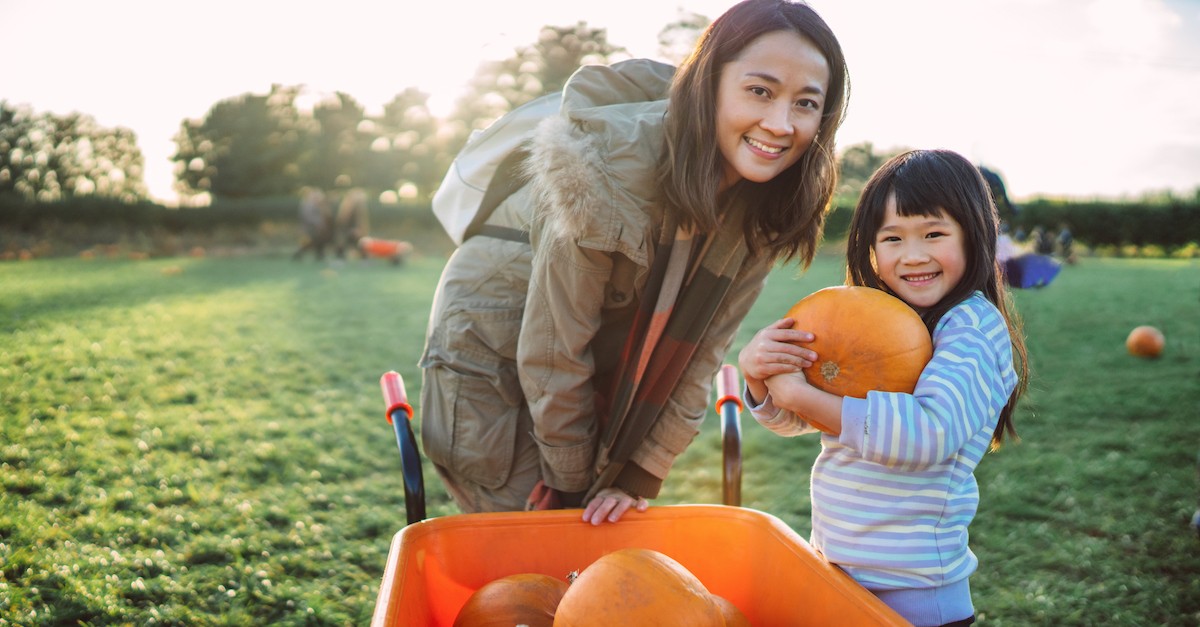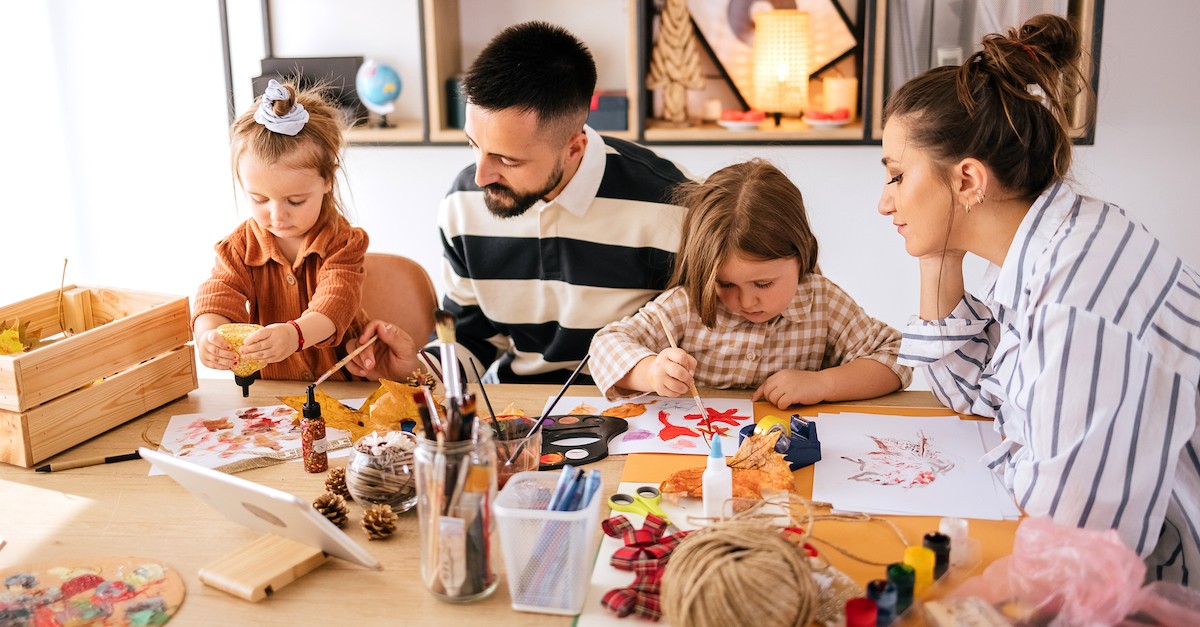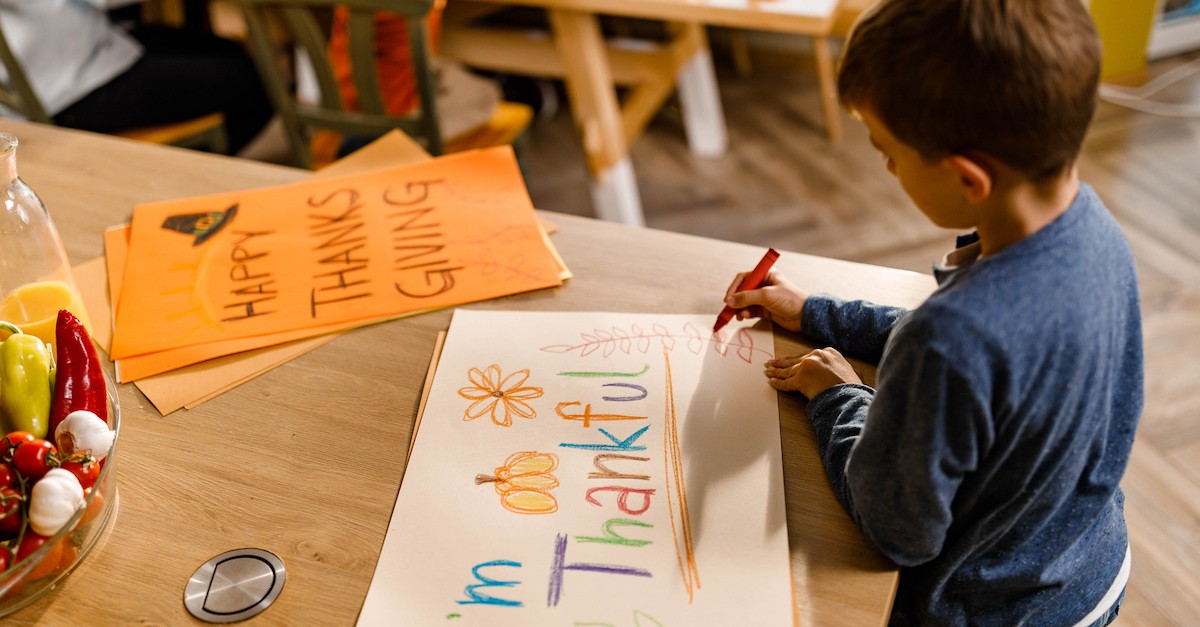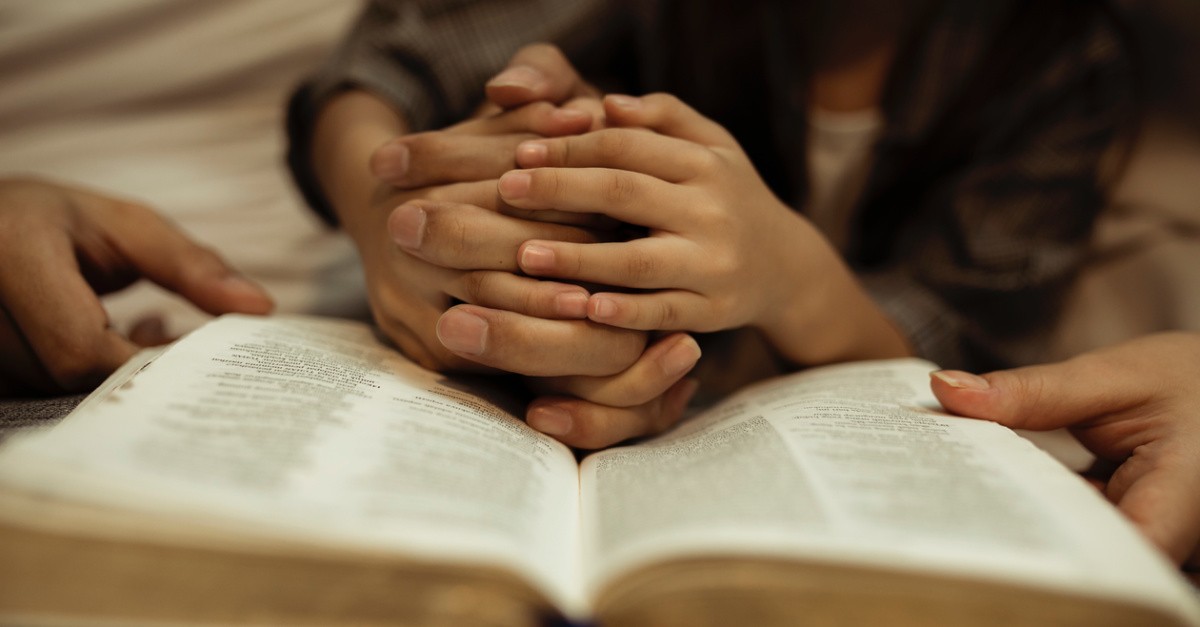6 Creative Family Bible Study Ideas for Fall
Parenting


Audio By Carbonatix
By Vivian Bricker, Crosswalk.com
During the fall months, there are many opportunities to try new family Bible studies. Although any season offers many options when it comes to Bible studies, fall is unique. It is the season of cooler weather, outdoor activities, hayrides, pumpkins, and soaking up the nice weather before winter comes. I didn't grow up with Bible studies; however, during my undergrad degree, we crafted and created various Bible studies for different functions and audiences.
Depending on your audience, you would create a season-themed Bible study for children, families, young adults, married couples, or seniors. These exercises helped my peers and me to get a good idea of these different audiences and what Bible studies are most compelling and engaging to each age group and life situation group. Below, I have compiled six creative family Bible study ideas for fall that you can do this season. After you complete these different family Bible study ideas, feel free to create your own. God has made us creative individuals for a reason; therefore, utilize your creativity to help impact your family and the world for Christ.

1. The Pumpkin Gospel
The pumpkin gospel is a Bible study idea for fall because it incorporates the traditional symbol of fall (pumpkins) to engage kids with the gospel. Parents should purchase a pumpkin and assist their children as they carve it, including opening the pumpkin up and removing the pumpkin seeds. As parents help their children complete this task, they can talk about Jesus's transformation work. Similar to how their children are transforming the pumpkin into something new, God is transforming us (2 Corinthians 5:17).
To help your children understand the gospel, talk about how the pumpkin needs to be cleaned out, just like our sins. Have your children remove the pumpkin seeds and clean out the pumpkin. After they have done this, share with them how this is exactly what God does with our sins. He cleans and washes them away by the blood of Jesus when we place faith in Him (Ephesians 1:7-10).
Once the pumpkin has been cleaned out and carved, it is a new creation. It can now have a candle lit inside of it and shine brightly for the world to see, just as we are made new and shine brightly for Jesus (Matthew 5:14-16). This is a fun activity that parents can do with their children year after year. It brings the Bible's words off the page to help children understand the gospel.

2. Interactive Games & Outdoor Activities
Children love games outside, therefore, why should they be forced to sit at a desk to study the Bible? Nowhere in the Bible are we told that we must approach Bible studies like a classroom assignment. Children will be more engaged if we take the Bible study outside and truly do something that holds their attention. A perfect way to do this type of Bible study is through interactive games and outdoor activities.
One game that is especially popular with families is charades. You can play this inside or outside, so don't feel like it is impossible to do this game if the weather isn't good. Ideally, try outside in your heart, but if not, inside the living room will work great. Each parent and each child is to act out a Bible study, character, or Bible passage. Through nonverbal communication, family members can learn more about the Bible and challenge what they have learned in a fun and welcoming environment.
While it is understandable that many people wouldn't classify this as a Bible study, it is a way for children and families to learn more about the Bible. Children learn through interaction and games. This is a fun way to study the Bible and for the children to actually retain what is being taught. They will stop associating God, the Bible, and church with being "boring" if they start participating in more child-friendly and family-friendly Bible study ideas.

3. Watercolor Bible Craft
Although I didn't grow up with Bible studies, my mom often taught my siblings and me various things while doing something active. For instance, she used to have us do watercolor painting while she would read us something out of an English or history book. Even though we were not very interested in what the textbooks had to say, it did help us retain the information better. Since we were doing something fun, it was not too difficult to listen and learn what our mom was trying to teach us.
The same goes for Bible studies. Together as a family, pull out watercolor materials and begin to paint. While you are painting, talk about Bible passages or Bible stories you want your children to learn. You could even theme your watercolor around the story, such as having everyone draw a big fish to teach about Jonah and the whale. In this way, children are studying the Bible while also retaining an engagement with the course material by doing something fun.
It might be easier to simply set a Bible in front of a family or a child, but it is not going to be as engaging. We have to ensure God's Word is coming off the page and making an impact on the family's life. Even if the parents are happy with studying the Bible without any additional Bible study activities, their children probably need something more interactive. The goal is to make Bible study time fun and something families look forward to rather than dreading.

4. Thankfulness-Themed Bible Study
If a family wants to do a more sit-down type of Bible study, a thankfulness-themed study is the way to go. Have your family sit around the kitchen table and read various Bible passages that discuss thankfulness to God. A few of these passages include Colossians 3:15-17, 1 Thessalonians 5:18, Psalm 100, Psalm 107, and Philippians 4:6-7.
Study these passages together and answer any questions your children have. After everyone has studied these passages and all questions have been answered, ask each family member what they are thankful for during this autumn season. If nobody wants to go first, start the conversation and list how you are thankful for God, salvation, your family, friends, and career. After you finish, each person can take turns sharing what they are thankful for.
As an extra bonus to this Bible study, parents can cut out cardboard shaped leaves where each family member can write a Bible passage talking about thankfulness and then on the back of the leaf, each family member can write what they are thankful for. This will help children truly reflect on what they learned and have a craft to remember it by in the future.

5. Bible Memorization
Family Bible studies can also be done on the go, such as when everyone is heading to an apple orchard or pumpkin patch. On the drive there, parents can quiz children on Bible passages they have memorized in the past. If their children are still learning a particular passage, parents can use this time in the car to help them memorize it. However, it is important for parents to ensure their children actually understand the verses rather than mindlessly reciting them.
Parents can ensure their children understand their memorized Bible passages by asking the child what the passage means. If the child is able to successfully convey back to their parents what the Bible passage means, then they are doing well. If they are not able to accurately explain what the passage means, their parents can use the drive to the fall event as a way to teach them what the verse actually means. This will help the children fully memorize the verse and, more importantly, understand it.

6. A Walk Outside and Answering Bible Questions
A final creative family Bible study idea for fall is to take a walk outside as a family and answer any Bible questions your children may have. If you are unsure of an answer, don't be afraid to be honest and tell them you don't know the answer. Inform them that you will research it and get back with them. This helps children to also know that it is okay not to know everything and sometimes it is best to do research before giving a dogmatic answer.
As you walk with your children outside, take in all of the fall colors. A great theme of this walk could be talking about God creation and how everything changes in the fall. You can talk about God's unique design, how the trees change color, and how the sun starts setting earlier. Allow your children to fully take in their surroundings and give them time if they take a while to come up with a few questions relating to God's creation.
Continue to foster a future of Bible studies with your child, during and after the fall season. Get creative and think about what your children like to do on a daily basis. Whether that is playing basketball, playing soccer, or going for a walk, ensure your children are engaged and excited for their next Bible study. The more you associate the Bible and God with joy, happiness, fun, and time with the family, the more your children will want to grow in their walk with Him.


